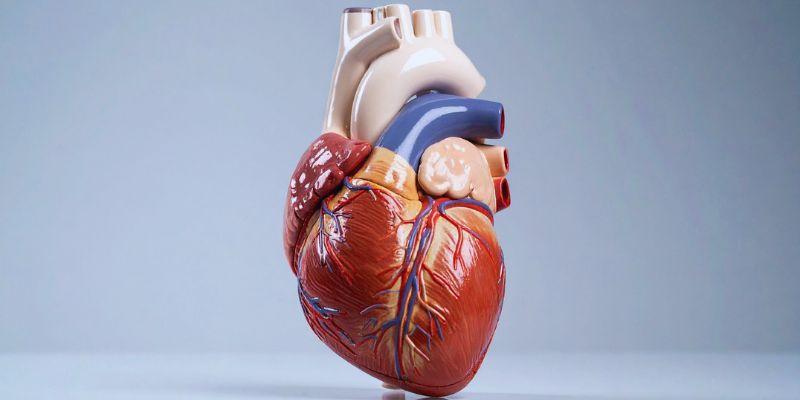Viral illnesses are hard to heal, and not only physically, but mentally, as well. Post-viral depression is a widely known, yet under-recognized symptom of convalescence, and it is a common condition amongst people. Understanding its causes, its symptoms and effective coping mechanisms are key interventions towards guaranteeing mental health during the recovery process.

Post-Viral Depression may be understood as a mental health condition that happens for an individual following a virus infection or any other illness, especially resulting from an infection.
Post-viral depression is a loitering of depressive symptoms following a viral illness. Although the physical manifestations of cough, fever, or aches can be cured, the emotional balance could require a long time. People can become abnormally depressed, reclusive or unmotivated and these states can last weeks or even months.
Post-viral depression contrary to the normal low mood, which comes and goes, can disrupt normal functioning. It affects the energy level, concentration and the interest in activities previously joyful. The first step toward healing is acknowledging the fact that it is a valid aspect of recovery, and not a weakness of an individual.
The origins of post-viral depression lie in the interplay between biology, psychology, and lifestyle. Several conditions interact to produce a weak emotional condition following sickness:
The combination of these factors prepares the environment of depression even in the case when physical health is also getting better.
The early identification of post-viral depression can help to avoid the overwhelming of the condition. Common signs include:
Post-viral depression highlights the new inseparable relationship between mind and body. A virus is not only able to weaken muscles or produce fever, it also impacts on the brain and nervous system. Infection-related inflammation disrupts mood-controlling brain areas, and individuals become more likely to feel sad.
Moreover, illness is followed by exhaustion, which lowers the level of activity. Exercise decreases production of endorphins-natural mood-boaters of the body, which causes an emotional decline in one. By learning about this relationship, people can think about post-viral depression as an element of the healing journey, despite the fact that it is not a weakness of the individual.
Healing must be a conscious process of regaining emotional, as well as physical, well-being. Some of the ways that have been effective are:

To family members and friends, it can be confusing to see post-viral depression. It matters a great deal to provide the appropriate type of support. The important ones are patience, empathy and encouragement. Rather than forcing a person to lighten up, it is recommended to be an active listener, be sure the person feels valid and subtlety suggest healthy habits.
Simple things, such as having a meal together, going on a walk or assisting in taking care of small chores, make one feel they belong and lessen the feeling of loneliness. It can also be invaluable to remind a loved one that enlisting professional help is a sign of capabilities not weakness.
It is necessary to prevent relapse and practice careful pacing and self-compassion. Excessive strain most times causes fatigue, which may aggravate the symptoms of depression. In order to prevent disappointments, one needs to acknowledge any type of progress, no matter how minimal, and divide large tasks into smaller steps and simple goals. Such an attitude switches the focus of frustration to success and developing strength in the healing journey.
Post-viral depression, difficult as the experience may be, can be transformative as well. A lot of individuals come out more conscious of their mental health and more dedicated to self-care. The development of resilience entails:
With time, the habits reinforce emotional stability and insure against the future times of low mood.
Post-viral depression is there to remind us that healing does not only occur when we are no longer feverish or tired. Authentic healing involves the body and the mind. With the realization of the reasons, the identification of the symptoms, and the implementation of supportive measures, the process will go through the challenging period without fear. Professional guidance, compassion, and patience, as necessary, convert recovery into a growth opportunity. Post-viral depression might resemble a solemn shadow but it does not determine the future.
 TOP
TOP
If you still believe that women don’t get heart diseases or that only older people can have heart diseases, you are wrong
 TOP
TOP
How building wealth is possible at any age with practical strategies that focus on consistent habits, smart choices, and long-term thinking
 TOP
TOP
Start making the most of your 401(k) today and secure a stronger financial future. Learn how timing, employer matches, and smart contributions can improve your retirement
 TOP
TOP
How financial aid for college works—from grants and scholarships to loans and work-study programs. Get clear, practical guidance for every funding option
 TOP
TOP
Discover 5 unique horse races that take place around the world, blending speed, thrill, and stunning cultural locations.
 TOP
TOP
Discover how Easter is celebrated across countries, from egg rolling to water fights, offering joy through local traditions.
 TOP
TOP
Explore North Wales’ most breathtaking gardens, from serene floral paths to hillside greenery with sea views.
 TOP
TOP
Wondering if it’s the right time for a loan? Learn how rates, timing, and your finances impact the decision.
 TOP
TOP
Discover the top reasons to pay credit card bills on time and how it safeguards your credit, money, and peace of mind.
 TOP
TOP
Uncover the best experiences in Rome, Italy, with this essential guide. Walk through ancient ruins, explore piazzas, visit historic churches, and get to know the Eternal City at your own pace
 TOP
TOP
Discover the best places to stay in Nashville, from lively downtown hotels to charming neighborhood rentals. Explore top areas suited for music lovers, families, and anyone seeking the perfect Nashville experience
 TOP
TOP
Thinking about a lease buyout? Learn how to evaluate your options, compare costs, and decide whether keeping your vehicle is the right move. Understand the financial side before making your next step